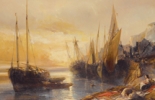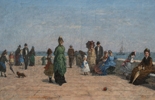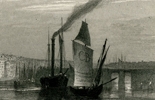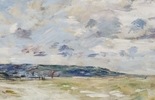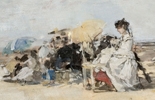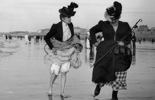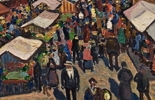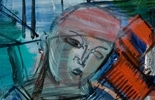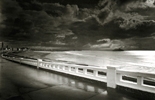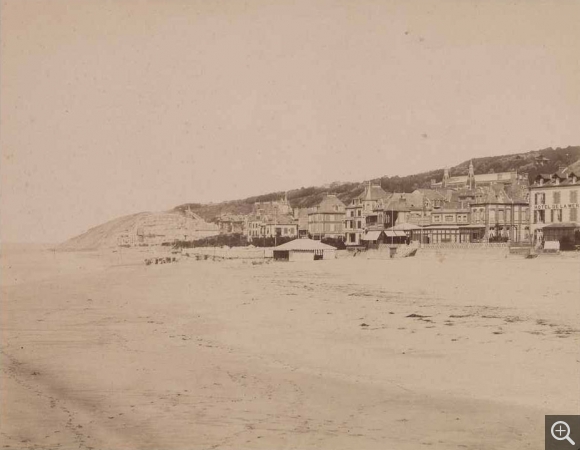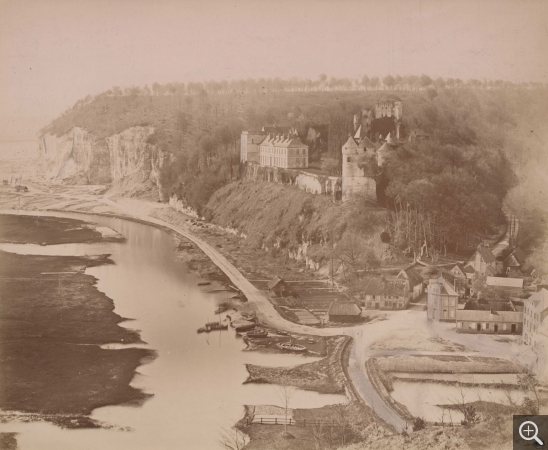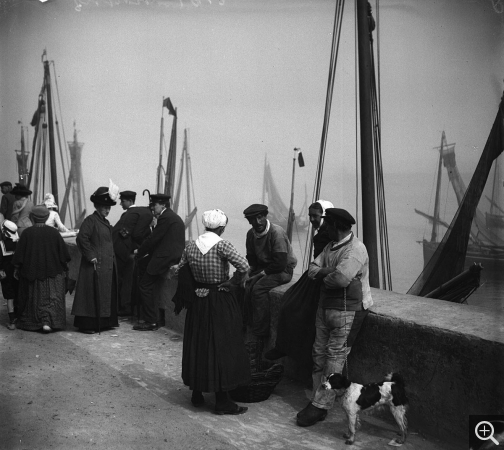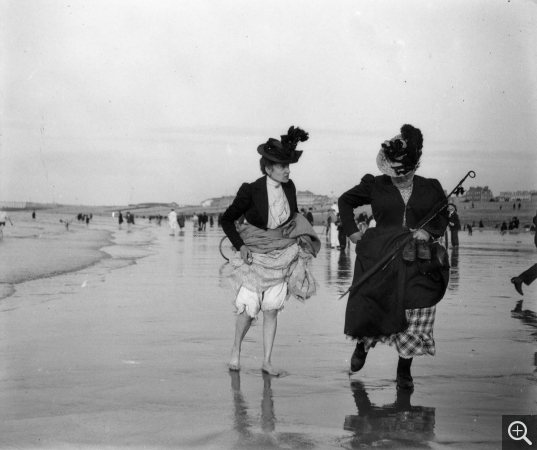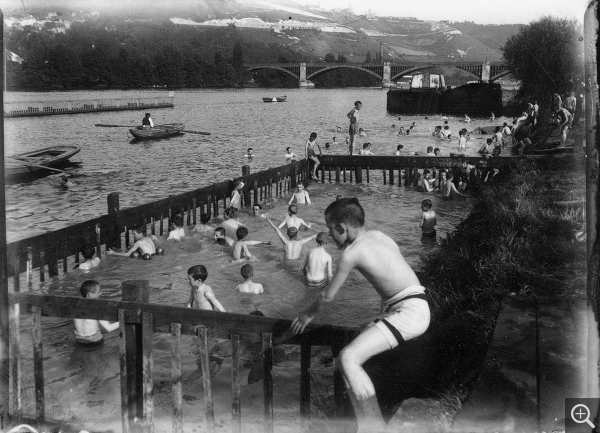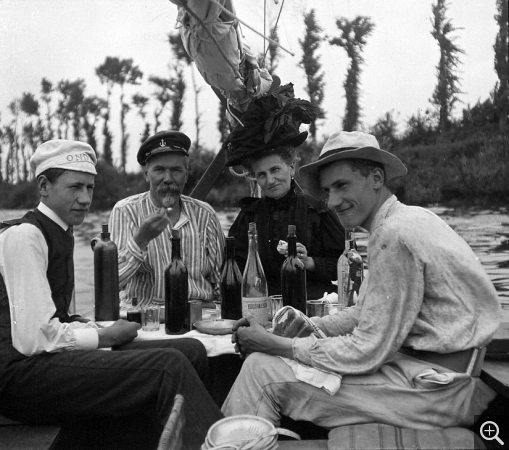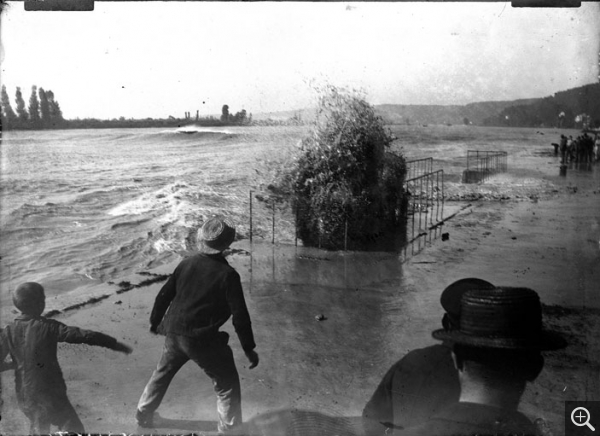L’estuaire de la Seine, l’invention d’un paysage
Long neglected by art historians, the history of photography is now recognized as an integral part of the "great history of art", and new ties between painting and photography are constantly being brought to light. Like painters, photographers made Normandy their location of choice. Some of the first photographers (bearing in mind that photography was invented in 1839) were from Normandy, a region with a treasure-trove of subjects and challenges that fired the imaginations of artists. The matter of movement in the landscape—boats, their steam and smoke, waves, clouds, etc.—became a major technical and aesthetic issue.
But as a new technology making rapid advances, photography soon proved to be a suitable medium for documenting heritage. In Normandy, a photographer by the name of Emile Letellier, member of learned societies, put his art to work for the Commission of Historic Monuments and took a wide variety of shots of the monuments and sites in what was then referred to as the Seine-Inférieure. Toward the turn of the century, he contributed to a major publication (La Normandie monumentale et pittoresque by Alexis Lemâle), illustrated with photogravures (engraved photographs), a modern extension of the Taylor and Nodier publication illustrated with engravings.
In the 1880s, photography techniques were improved and the practice spread to new generations of enthusiasts who were often members of photography societies. That was the case of Louis Chesneau, founding member of the Photo-Club Rouennais (1891). The hobbyists practised photography together, but also enjoyed leisure sports and went on excursions. Technological advances now made it possible for them to record movements. The bustling city and regattas on the Seine became their subjects of choice. The clubs held meetings and public screenings... before the advent of cinema shows.
But as a new technology making rapid advances, photography soon proved to be a suitable medium for documenting heritage. In Normandy, a photographer by the name of Emile Letellier, member of learned societies, put his art to work for the Commission of Historic Monuments and took a wide variety of shots of the monuments and sites in what was then referred to as the Seine-Inférieure. Toward the turn of the century, he contributed to a major publication (La Normandie monumentale et pittoresque by Alexis Lemâle), illustrated with photogravures (engraved photographs), a modern extension of the Taylor and Nodier publication illustrated with engravings.
In the 1880s, photography techniques were improved and the practice spread to new generations of enthusiasts who were often members of photography societies. That was the case of Louis Chesneau, founding member of the Photo-Club Rouennais (1891). The hobbyists practised photography together, but also enjoyed leisure sports and went on excursions. Technological advances now made it possible for them to record movements. The bustling city and regattas on the Seine became their subjects of choice. The clubs held meetings and public screenings... before the advent of cinema shows.
- Émile LETELLIER (1833-1893), View of the beach at Trouville, 1877, photography, 23.5 x 30 cm. © Le Havre, bibliothèque municipale / Émile Letellier
- Émile LETELLIER (1833-1893), Tancarville, view of the castle and the village, 1877, photography, 39 x 47.5 cm. © Le Havre, bibliothèque municipale / Émile Letellier
- Louis CHESNEAU (1855-1923), Fishermen at the port, Le Tréport, 1912, photography. Famille Chesneau. © Rouen, Pôle Image Haute-Normandie / Louis Chesneau
- Louis CHESNEAU (1855-1923), Two ladies, Dieppe, September 9, 1900, modern print (by Yvon Le Marlec in 1996) from an 8 x 9 cm, glass negative, 30 x 40 cm. Famille Chesneau. © Rouen, Pôle Image Haute-Normandie / Louis Chesneau
- Louis CHESNEAU (1855-1923), Bains du Galet, Rouen, August 1897, modern print (by Yvon Le Marlec in 1996) from an 8 x 9 cm, glass negative, 24 x 30 cm. Famille Chesneau. © Rouen, Pôle Image Haute-Normandie / Louis Chesneau
- Louis CHESNEAU (1855-1923), Motor boat belonging to Lefebvre and Halley, Croisset, June 8, 1902, modern print (by Yvon Le Marlec in 1996) from an 8 x 9 cm, glass negative, 24 x 30 cm. Famille Chesneau. © Rouen, Pôle Image Haute-Normandie / Louis Chesneau
- Louis CHESNEAU (1855-1923), Arrival of the tidal bore, Caudebec-en-Caux, September 11, 1904, modern print (by Yvon Le Marlec in 1996) from an 8 x 9 cm, glass negative, 30 x 40 cm. Famille Chesneau. © Rouen, Pôle Image Haute-Normandie / Louis Chesneau


